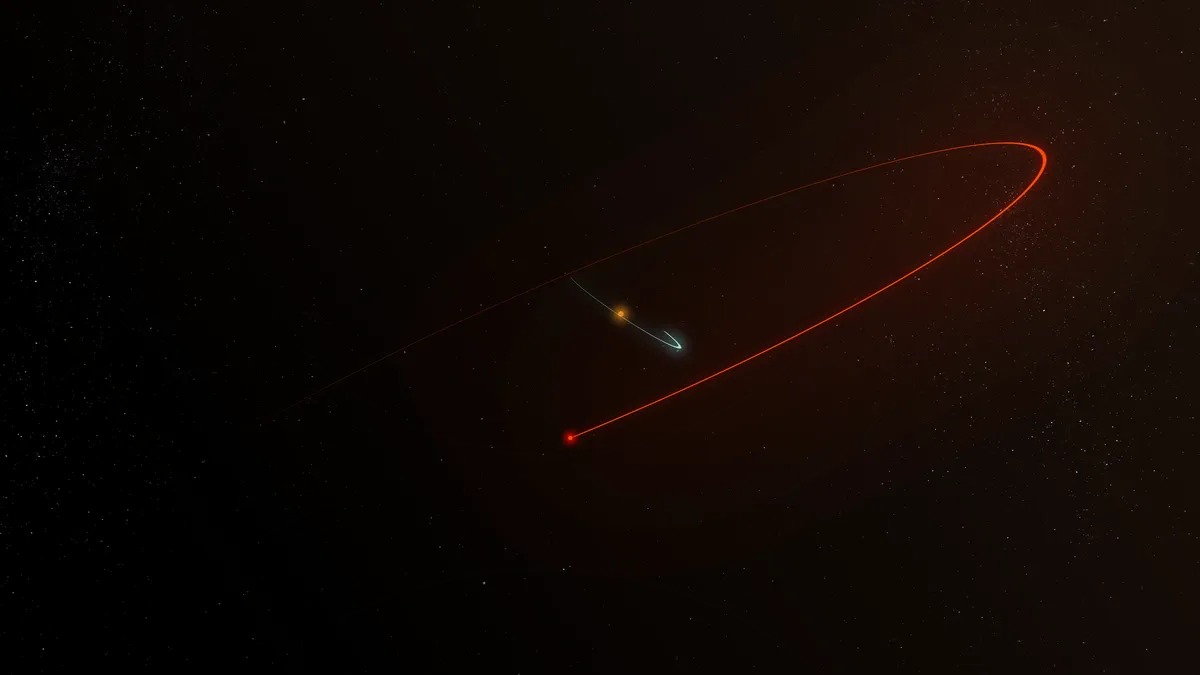About 20 light-years from Earth, scientists noticed a star that behaved quite strangely. Observations have shown that the luminary swings from that, as if something “tugged” it. It turned out that behind the strange behavior lies an exoplanet that is twice the size of Jupiter, and orbits its parent star in 284 days. According to calculations, the planet’s orbit is closer than Venus to our Sun. But the study showed that this shaky planetary system is unusual – there are as many as two stars in it. That is, it is a binary star system with a rotating planet between two stars.

This particular pair called GJ 896AD consists of two red dwarfs. That is, these are the coldest stars in our Milky Way. The largest of the two stars is located in the center, and has about 44% of the mass of our Sun. It is orbited by a super-Jupiter, which orbit is tilted by about 148 degrees relative to the two stars. The rotation of a massive planet around a dead star causes the orbit of a red dwarf to “jump”. The smaller star makes up only about 17% of the mass of our Sun and orbits a larger red dwarf in a more elongated orbit.
To create a three-dimensional animation, it took decades of observations thanks to the VLBA Basics telescope network. This scientific mechanism consists of a network of 10 observation stations located throughout the United States, each of which is equipped with a 25-meter radio antenna. In fact, the stations separately collect information about deep space, and then connect the dots to form an extremely clear picture of what is happening in the Universe.
For the GJ 896AD study, scientists collected optical observations over a staggering time range: from 1941 to 2017. They then used VLBA observations made between 2006 and 2011. And then they added the information collected in 2020. Put it all together and you get a stunningly accurate measurement of the positions of a binary planetary system with a time comparable to the “stop motion” frame-by-frame decomposition of a video. It is exactly such an accurate measurement that has helped to compile the most accurate 3D model of a binary star-planet system in history.
More technical details can be found in an article published in The Astronomical Journal.
Follow us on Twitter to get the most interesting space news in time
https://twitter.com/ust_magazine
